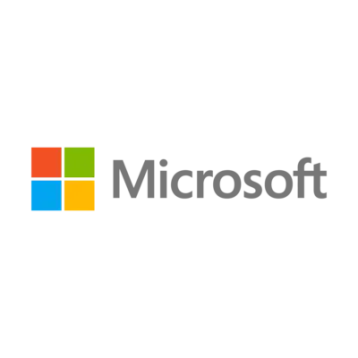Here are 5 ways Silverfort can help you strengthen your AD hygiene posture management:

5 Ways to Step Up Your
AD Hygiene with Silverfort


How does Silverfort detect bad authentications from patched Print Spooler services?
Silverfort detects PrintNightmare by analyzing authentication events and abnormal service behavior and triggering alerts for further investigation and mitigation. Microsoft explains how to fully mitigate PrintNightmare but with Silverfort you can completely skip the problematic network packet capture as it will alert on all the bad Print Spooler authentications.
Customer Example:
A large US school district detected PrintNightmare in their environment thanks to Silverfort. With Silverfort they fixed this issue and reduced the number of unnecessary authentications in their environment by about 70%.

How does Silverfort detect admins with SPN?
Silverfort identifies shadow admin accounts based on their privileges and the permissions they have been granted, in both on-prem and cloud environments.
Customer Example:
Silverfort detects these types of accounts by monitoring authentication events involving Service Principal Names (SPNs) within the network. It utilizes behavioral analytics and user behavior profiling to identify deviations from normal patterns, such as unusual access requests or privilege escalation attempts associated with admin privileges

How does Silverfort detect stale users?
Silverfort automatically identifies and discovers stale users based on a lack of user activity data and information gathered from logs and other sources.
Customer Example:
At a leading US retail company, Silverfort detected that 13% of user accounts were stale users that had not performed any recent activity. This helped the company to clean up its Active Directory by disabling/removing the unused accounts, which ultimately helped decrease licensing and minimize costs.

How does Silverfort detect NTLMv1?
Silverfort monitors all authentications processed by Active Directory without using event logs. It identifies which devices are sending NTLMv1 authentication requests and sends alerts to the logs screen inside the Silverfort platform.
Customer Example:
In a leading global manufacturer’s environment, Silverfort discovered that around 5-8% of admin users still authenticate with NTLMv1 protocol, which was exposing their user passwords to compromise. Weekly reports are now sent to the team so they can reduce and ultimately eliminate the use of NTLMv1

NTLMv1 is inherently insecure due to its use of weak encryption (DES) to encrypt the session key. This encryption type can be easily broken, and the user's password can be extracted.
How does Silverfort detect shadow admins?
Silverfort identifies shadow admin accounts based on their privileges and the permissions they have been granted, in both on-prem and cloud environments.
Customer Example:
At a Fortune 500 financial company, Silverfort detected 109 new shadow admins created by a single AD misconfiguration. By detecting and removing the privileges of these admin accounts, the customer decreased their attack exposure.


Here are 5 ways Silverfort can help you strengthen your AD hygiene posture management:

5 Ways to Step Up Your
AD Hygiene with Silverfort

How does Silverfort detect shadow admins?
Silverfort identifies shadow admin accounts based on their privileges and the permissions they have been granted, in both on-prem and cloud environments.
Customer Example:
At a Fortune 500 financial company, Silverfort detected 109 new shadow admins created by a single AD misconfiguration. By detecting and removing the privileges of these admin accounts, the customer decreased their attack exposure.
How does Silverfort detect NTLMv1?
Silverfort monitors all authentications processed by Active Directory without using event logs. It identifies which devices are sending NTLMv1 authentication requests and sends alerts to the logs screen inside the Silverfort platform.
Customer Example:
In a leading global manufacturer’s environment, Silverfort discovered that around 5-8% of admin users still authenticate with NTLMv1 protocol, which was exposing their user passwords to compromise. Weekly reports are now sent to the team so they can reduce and ultimately eliminate the use of NTLMv1
NTLMv1 is inherently insecure due to its use of weak encryption (DES) to encrypt the session key. This encryption type can be easily broken, and the user's password can be extracted.
How does Silverfort detect stale users?
Silverfort automatically identifies and discovers stale users based on a lack of user activity data and information gathered from logs and other sources.
Customer Example:
At a leading US retail company, Silverfort detected that 13% of user accounts were stale users that had not performed any recent activity. This helped the company to clean up its Active Directory by disabling/removing the unused accounts, which ultimately helped decrease licensing and minimize costs.
How does Silverfort detect admins with SPN?
Silverfort identifies shadow admin accounts based on their privileges and the permissions they have been granted, in both on-prem and cloud environments.
Customer Example:
Silverfort detects these types of accounts by monitoring authentication events involving Service Principal Names (SPNs) within the network. It utilizes behavioral analytics and user behavior profiling to identify deviations from normal patterns, such as unusual access requests or privilege escalation attempts associated with admin privileges
How does Silverfort detect bad authentications from patched Print Spooler services?
Silverfort detects PrintNightmare by analyzing authentication events and abnormal service behavior and triggering alerts for further investigation and mitigation. Microsoft explains how to fully mitigate PrintNightmare but with Silverfort you can completely skip the problematic network packet capture as it will alert on all the bad Print Spooler authentications.
Customer Example:
A large US school district detected PrintNightmare in their environment thanks to Silverfort. With Silverfort they fixed this issue and reduced the number of unnecessary authentications in their environment by about 70%.

